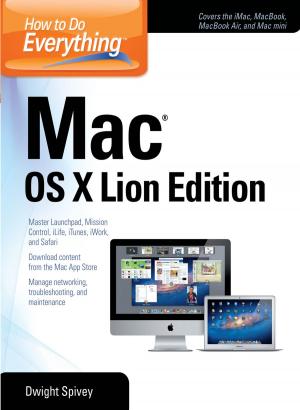How to Do Everything Microsoft SharePoint 2013
Nonfiction, Computers, Application Software, Business Software, Internet, Business & Finance, Management & Leadership, Management| Author: | Stephen Cawood | ISBN: | 9780071809825 |
| Publisher: | Mcgraw-hill | Publication: | March 21, 2013 |
| Imprint: | McGraw-Hill Education | Language: | English |
| Author: | Stephen Cawood |
| ISBN: | 9780071809825 |
| Publisher: | Mcgraw-hill |
| Publication: | March 21, 2013 |
| Imprint: | McGraw-Hill Education |
| Language: | English |
Maximize Microsoft SharePoint 2013
Written by a former member of the SharePoint development team, How to Do Everything: Microsoft SharePoint 2013 shows you how to get the most out of the latest release of this dynamic business collaboration platform. You’ll learn to set up SharePoint sites and use document management, wikis, taxonomy, blogs, social features, and more to organize, manage, and share content. Real-world examples help you accomplish tasks quickly and easily. Basic information on SharePoint development and administration is also included in this practical guide.
- Work with sites, apps, lists, libraries, and items
- Upload documents, manage files with document libraries, and use document versioning and content approval features
- Collaborate via discussion boards, blogs, wikis, events, surveys, calendars, and newsfeeds
- Use social tagging, enable a folksonomy, and use enterprise keywords
- Create a taxonomy hierarchy using enterprise managed metadata
- Build publishing sites, personal sites, and websites
- Display data on pages using web and app parts
- Customize apps, lists, forms, and navigation
- Use SharePoint with client applications, including Microsoft Office, Outlook,
- InfoPath, SharePoint Designer, and third-party applications
- Learn the basics of SharePoint administration and development
Maximize Microsoft SharePoint 2013
Written by a former member of the SharePoint development team, How to Do Everything: Microsoft SharePoint 2013 shows you how to get the most out of the latest release of this dynamic business collaboration platform. You’ll learn to set up SharePoint sites and use document management, wikis, taxonomy, blogs, social features, and more to organize, manage, and share content. Real-world examples help you accomplish tasks quickly and easily. Basic information on SharePoint development and administration is also included in this practical guide.
- Work with sites, apps, lists, libraries, and items
- Upload documents, manage files with document libraries, and use document versioning and content approval features
- Collaborate via discussion boards, blogs, wikis, events, surveys, calendars, and newsfeeds
- Use social tagging, enable a folksonomy, and use enterprise keywords
- Create a taxonomy hierarchy using enterprise managed metadata
- Build publishing sites, personal sites, and websites
- Display data on pages using web and app parts
- Customize apps, lists, forms, and navigation
- Use SharePoint with client applications, including Microsoft Office, Outlook,
- InfoPath, SharePoint Designer, and third-party applications
- Learn the basics of SharePoint administration and development















